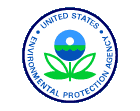|
Our Mission
The mission of the Environmental
Protection Agency is to protect human health and the environment.
Since 1970, EPA
has been working for a cleaner, healthier environment for the American
people. View the Agency's complete strategic
plan, annual
report,
and policy resources.
Who We Are
EPA employs 18,000 people across the country, including our headquarters
offices in Washington, DC, 10 regional
offices, and more than a dozen
labs. Our staff are highly educated and technically trained;
more than half are engineers, scientists, and policy analysts. In
addition, a large number of employees are legal, public affairs,
financial, information management and computer specialists. EPA
is led by the Administrator, who is appointed by the President of
the United States.
What We Do
EPA leads the nation's environmental science, research, education
and assessment efforts.
Develop and enforce regulations: EPA works to develop
and enforce regulations that implement environmental laws enacted
by Congress. EPA is responsible for researching and setting national
standards for a variety of environmental programs, and delegates
to states and tribes the responsibility for issuing permits and
for monitoring and enforcing compliance. Where national standards
are not met, EPA can issue sanctions and take other steps to assist
the states and tribes in reaching the desired levels of environmental
quality. More information
Offer financial assistance: In recent years, between
40 and 50 percent of EPA's enacted budgets have provided direct
support through grants to State environmental programs. EPA grants
to States, non-profits and educational institutions support high-quality
research that will improve the scientific basis for decisions
on national environmental issues and help EPA achieve its goals.
Perform environmental research: At laboratories
located throughout the nation, the Agency works to assess environmental
conditions and to identify, understand, and solve current and
future environmental problems; integrate the work of scientific
partners such as nations, private sector organizations, academia
and other agencies; and provide leadership in addressing emerging
environmental issues and in advancing the science and technology
of risk assessment and risk management. More
information
Sponsor voluntary partnerships and programs: The
Agency works through its headquarters and regional offices with
over 10,000 industries, businesses, non-profit organizations,
and state and local governments, on over 40 voluntary pollution
prevention programs and energy conservation efforts. Partners
set voluntary pollution-management goals; examples include conserving
water and energy, minimizing greenhouse gases, slashing toxic
emissions, re-using solid waste, controlling indoor air pollution,
and getting a handle on pesticide risks. In return, EPA provides
incentives like vital public recognition and access to emerging
information. More information
Further environmental education: EPA advances educational
efforts to develop an environmentally conscious and responsible
public, and to inspire personal responsibility in caring for the
environment. More information
How We Are Organized
Explore the Agency organization chart
and access information about specific program
offices, regional offices, and labs
across the country.
Our Budget and Performance
Access primary budget
documents, information about performance measures, EPA's annual
report, and various other management reports, including:
Contracting Opportunities
Access documents that describe the specifications and proposal due
dates for supplies and services the government requires, information
on contract awards, notifications of canceled procurements, and
other information about contracting with EPA.
Our History
In July of 1970, the White House and Congress worked together to
establish the EPA in response to the growing public demand for cleaner
water, air and land. Prior to the establishment of the EPA, the
federal government was not structured to make a coordinated attack
on the pollutants that harm human health and degrade the environment.
The EPA was assigned the daunting task of repairing the damage already
done to the natural environment and to establish new criteria to
guide Americans in making a cleaner environment a reality. More
Information | |

